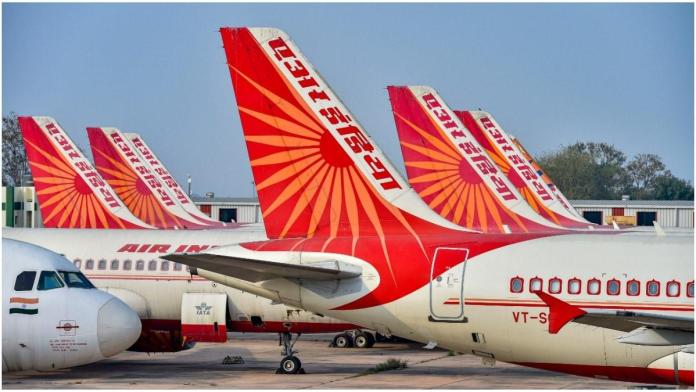Air India, now owned by the Tatas who were the original owners of Tata Airlines — usurped by Jawaharlal Nehru’s government — is going to order 500 jetliners worth tens of billions of dollars. These 500 new aeroplanes will come from the French company Airbus and the American company Boeing.
This indicates that the airline is moving towards a large-scale and ambitious revival under the Tata Group conglomerate, which acquired it in January this year. The orders include “as many as 400 narrow-body jets and 100 or more wide-bodies including Airbus A350s and Boeing 787s and 777s”, a source was quoted by news agency Reuters as saying although no party involved — Airbus, Boeing or the Tata group — has commented on the reports so far.
Once IndiGo had bought 100 jetliners in one go. How is the Air India deal different?
It is believed that IndiGo made the huge purchase during the UPA government years when NCP’s Praful Patel was the civil aviation minister who allegedly cancelled several profit-making flights of Indian Airlines and later ‘sold’ those routes to IndiGo. Further, the airline was allegedly assured under instruction from UPA chairperson and then INC president Sonia Gandhi that its planes would be treated as the preferred airliner by airports in India, which was why for years IndiGo’s flights were seen getting the most competitive rates for customers, with the company’s planes always parked the nearest to the passenger lobbies at airports.
The Air India deal, while having the potential to rank among the biggest by a single airline in terms of volume, easily topping $ 100 billion at list prices, including options, is not marred by allegations of backdoor manoeuvres with the government of the day. Financially, it is bigger than the American Airlines order for 460 Airbus and Boeing jets placed more than a decade ago.
While the Tata Group will not walk away without some discounts, the deal would be worth tens of billions of dollars and cap a volatile year in the industry.
Further, reports of this potential order come only a few weeks after Tata’s announcement of a merger of Air India and Vistara, to create a bigger full-service carrier and strengthen its presence in the skies — domestic as well as international. This was a joint venture with Singapore Airlines (SIA).
The Vistara deal gave Tata a fleet of 218 aircraft, making Air India the country’s largest international carrier. It still lags behind IndiGo domestically though, which as of now continues as the industry leader.
Air India buying 500 jetliners amid a difficult business environment
The year about to end has been particularly challenging for the aviation industry, which makes the deal all the more significant.
While people have started flying again, the aviation industry has been facing ever-increasing industrial and environmental pressures. Amid such an uncertain business environment, SIA and Tata Sons announced on 29 November that they were merging Air India and Vistara, with SIA getting a 25.1% stake in the merged entity at an investment of Rs 2,058.5 crore ($ 250 million) in Air India as part of the transaction.
This 25.1% stake will be in a much bigger Air India group comprising Air India, Vistara, AirAsia India and Air India Express, with the process of merger ending by March 2024, subject to regulatory approvals. The group is already in the process of merging Air India Express and AirAsia India into one entity that will provide low-cost flight options.
Importantly, at a time when the Russi-Ukraine war had turned the skies over these countries into no-fly zones, Air India was still allowed to fly over the war-affected territories. This gave the airline an edge over the competition that was denied the air route.
What might the Tata Group be thinking?
The new order of 500 jets, which will take about a decade to be delivered, along with the earlier Vistara deal, suggests that the group is carefully planning to win back a substantial share of traffic flows to and from India, so far dominated by foreign carriers such as Emirates currently.
Further, Air India seems to be in the mood for a bigger share of regional international traffic and the domestic market, setting up a battle with rival IndiGo in both spaces.
What impact would the Air India expansion have on the aviation sector of the economy?
India is the fastest-growing airline market in the world where 500 new jets would replace as well as expand fleets to serve a consumer base that continues to expand as more and more Indians look at flying as an affordable and convenient travel option.
Prime Minister Narendra Modi has time and again spoken of his government’s goal to make India a $ 5 trillion economy. This deal would contribute to that.
What are the challenges ahead?
Experts have warned of various hurdles that impede the way of the Tatas’ ambition to make Air India a global leader again. These include frail domestic infrastructure, pilot shortages and the threat of tough competition with established carriers from the Middle East and other airliners.



You must log in to post a comment.